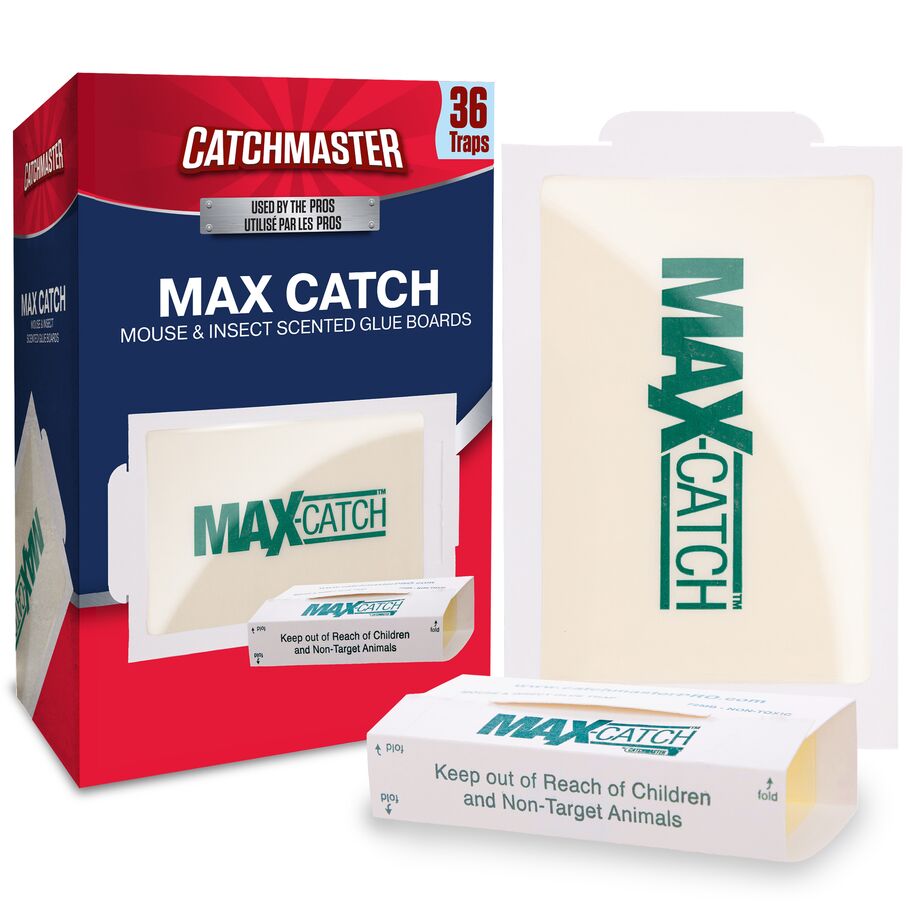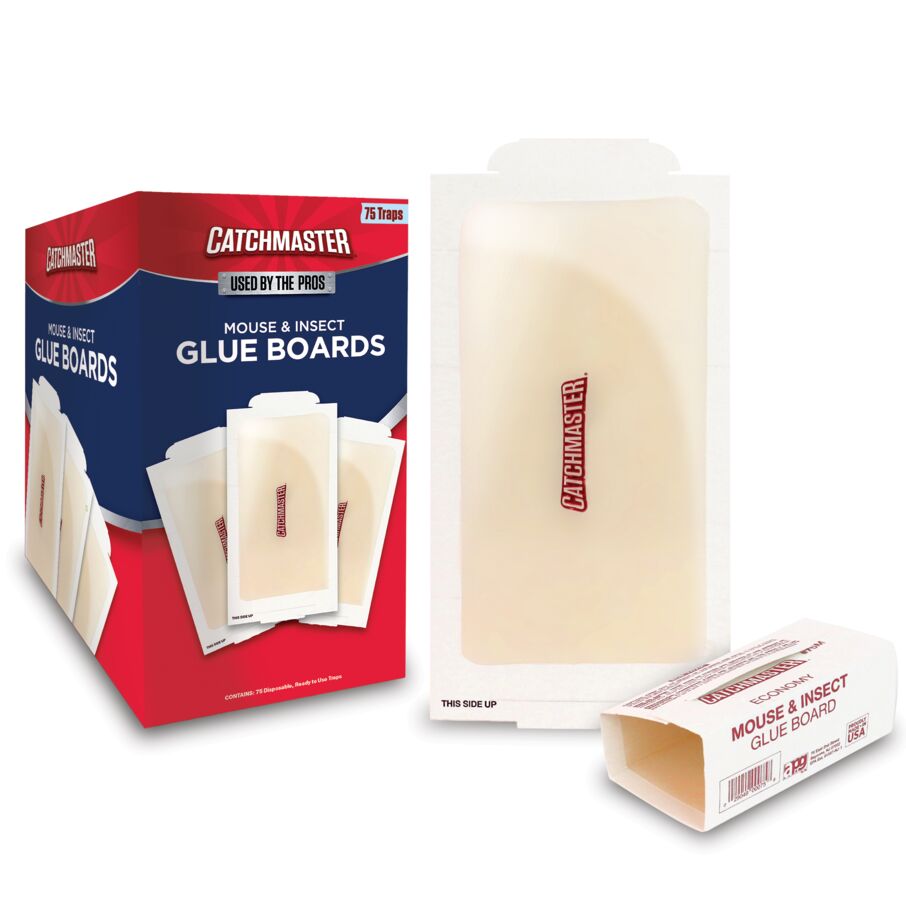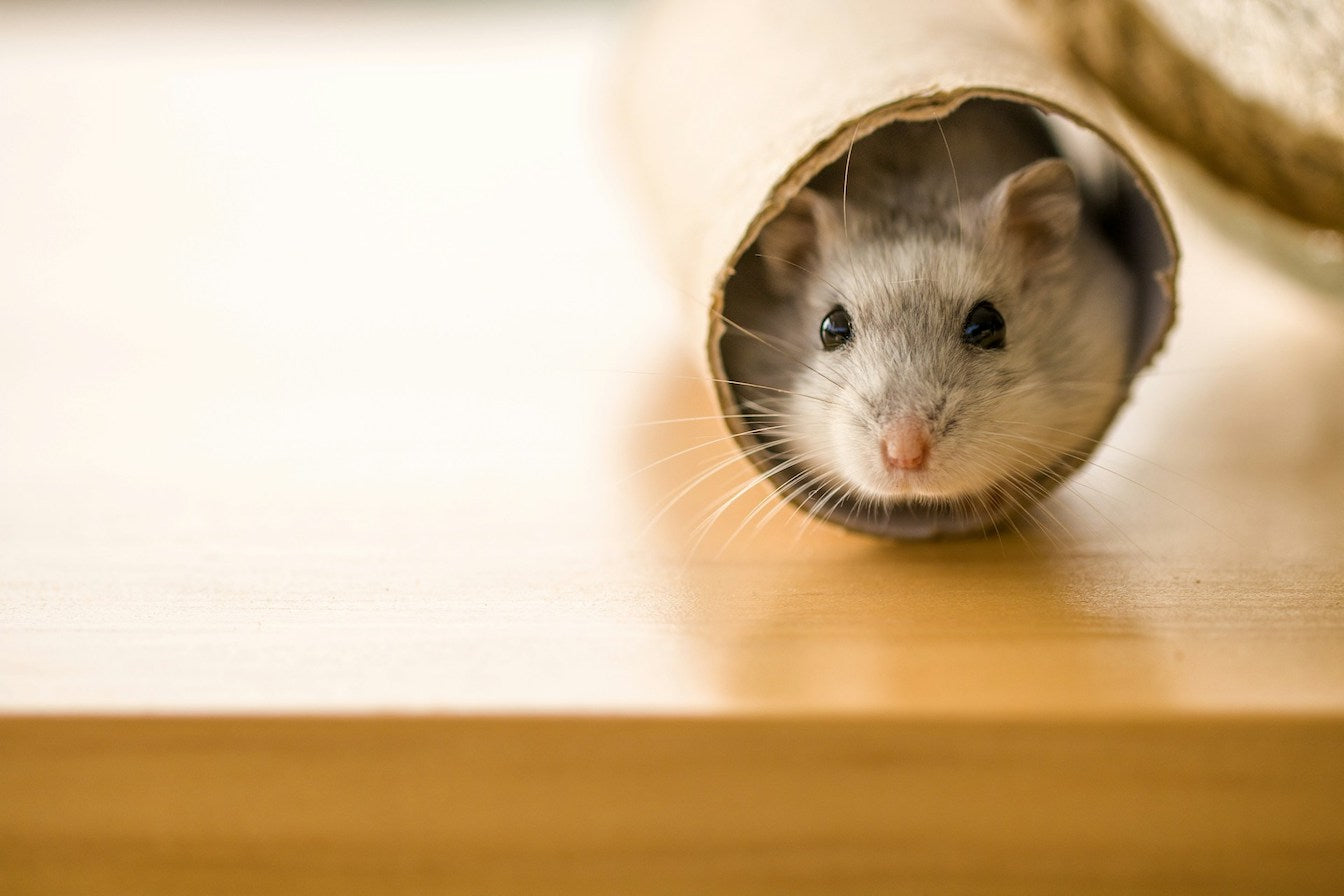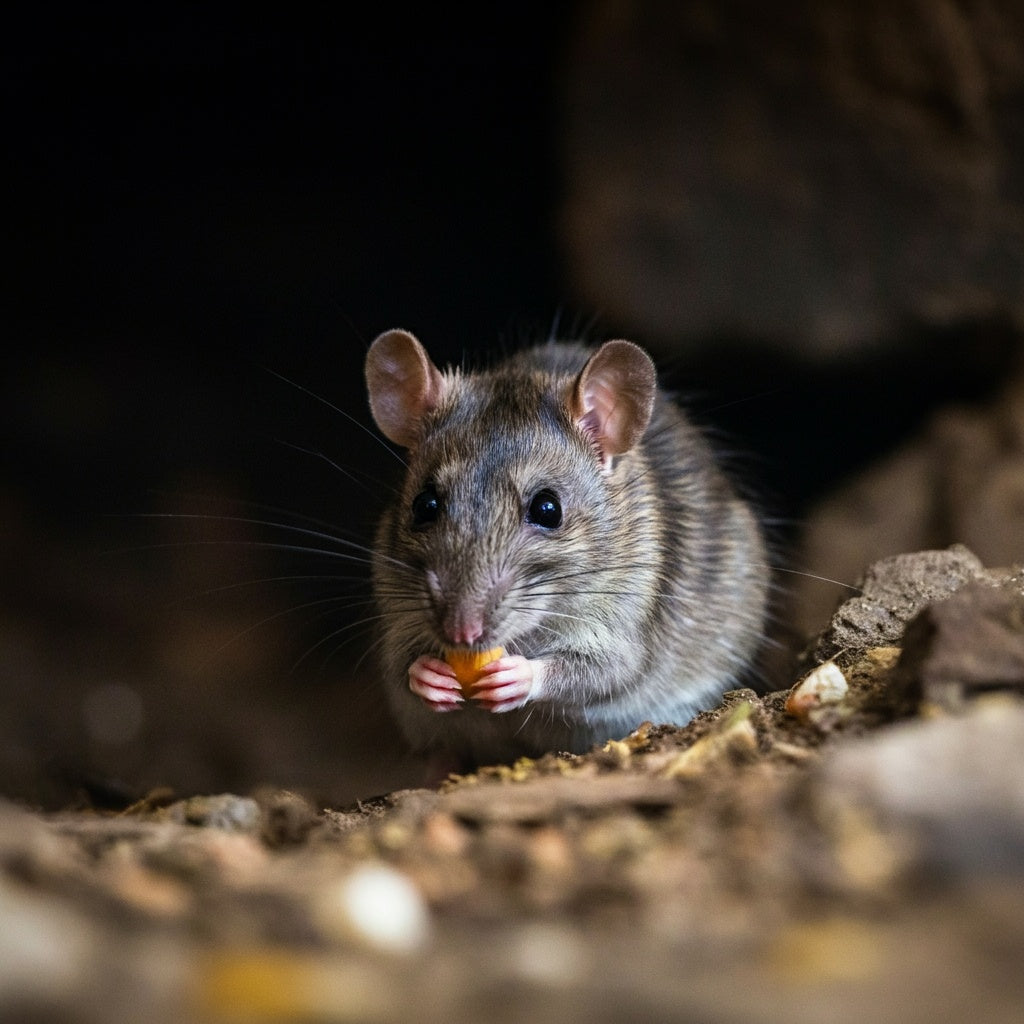
Ever wondered what makes mice visit your home? All that delicious food!
You might not be realizing it, but your home could look like a warm, inviting, all-you-can-eat buffet to mice. Getting a better understanding of a mouse diet will help you lock up the foods they love and keep them from nibbling on your snacks.
Mouse Diet Basics: Omnivores With a Sweet Tooth
What do mice like eating? Honestly, pretty much anything! Typical house mice are not picky eaters and will often eat 15-20 times per day. While they might eat often, they don’t eat a lot. A mouse only needs about 3 grams of food daily. That's about the size of a penny.
Although most mice have a special love for sweet and fatty foods, they’ve been conditioned to survive by munching on whatever they can find. That means you could be supplying them with a robust, filling menu without even realizing it!
When faced with a mouse infestation, understanding what they love to eat will help you choose the right bait for your traps. This knowledge will also help you clean up your space so you don't invite them in in the first place.
Foods That Attract Mice
So, what do mice eat in the house? Mice are pretty adventurous eaters, but they are particularly drawn to high-calorie foods rich in carbohydrates, fats, and proteins. These nutrients give them everything they need to maintain their high-energy lifestyle.
Grains, Cereal, and Baking Ingredients
Grains are the perfect food for mice. Packed with nutrients and often easy to find, some of the most attractive grains include breakfast cereals, rice, pasta, flour, baking mixes, breadcrumbs, and crackers.
Pet Food, Bird Seed, and Nut Mixes
Your pet’s dinner could also be a welcome buffet for mice. Things like dry dog and cat food, pet treats, and animal feed are particularly tempting for little rodents. They also love bird seed, nuts, and other seeds.
Candy, Chocolate, and Fatty Leftovers
Just like humans, most mice have a strong sweet tooth! They’re often drawn to the delicious aromas of chocolate and candy.
Peanut butter, greasy leftovers, and meat scraps also make a delicious, high-calorie dinner for these unwanted visitors.
Outdoor Food Sources That Drive Mouse Infestations
Mice don’t just find food inside your house. Several outdoor food sources could be attracting them to your property.
Fallen Fruit, Compost, and Chicken Feed
What do house mice eat? Pretty much anything in your yard! Things like rotten fruit from trees, compost piles, and garden vegetables make a delicious mouse dinner.
Chicken and bird feed, as well as other outdoor pet food, can attract mice and rodents into your yard.
Garden Seeds, Stored Lawn Products, and Trash
There are also some other outdoor items that mice love to eat that you might not necessarily see as a meal. This includes items such as grass and plant seeds, open garbage bins, BBQ grease on grills, and stored lawn products.
Mice also like to hide in places like garages and sheds where these things are usually stored. Clearing out clutter around your lawn products and trash will also help prevent them from coming inside.
Mouse Food Prevention Checklist
Knowing what do mice like to eat is one thing. Taking steps to remove the attractive items from your home is another! Here are some steps you can take to prevent mice from treating your home like a 24-hour diner.
Store Food Correctly
Food storage can go a long way! Keep mice out of your pantry by always using airtight containers. Whenever possible, choose metal or glass storage options.
Your food isn’t the other thing attracting them into your home! Be sure to keep pet food and bird seed in sealed containers, too. You should also make it a habit to clean out your pet’s food bowls every night.
Reduce Access
In addition to storing it correctly, you should also make it harder for mice to reach food sources. Be sure to protect your home by sealing any holes or gaps around pipes, windows, doors, and your home’s foundation.
Always keep your doors closed or use screen doors when you want fresh air. You can also install screens in your windows to keep mice from climbing in. Installing door sweeps and weatherstripping can also help you seal even the smallest entryways.
Clean Crumbs and Leftovers
It’s also incredibly important to maintain a clean environment. Get into the habit of wiping your counters and tables after meals. You should also sweep your floors daily and clean under appliances once a week.
Empty your inside garbage cans regularly. When you take the bags outside, make sure that they are closed and sealed properly. After putting them in the outside bins, make sure the bins are also properly closed.
Finally, don’t leave any pet food out overnight. If you want to store pet food outside or in the garage, make sure it's in an airtight, sealed container. This will help keep food scents in and mice or rats out!
Stop Mice From Feasting With Catchmaster Mouse Traps
Knowing what mice like to eat the most will help you, especially when it comes to learning how to catch a mouse. Instead of struggling to reclaim your space, let Catchmaster help!
Our mouse traps are the perfect solution for catching these hungry visitors. Our snap traps work great with foods like peanut butter or chocolate as bait. You can also skip the bait altogether by choosing our specially formulated glue traps.
All of our rat and mouse traps are non-toxic and can be used safely around children and pets, as well as in sensitive areas like kitchens and pantries.
Understanding what mice eat helps prevent infestations, but quick action with reliable Catchmaster products will help stop mice in their tracks. Combine preventive measures and Catchmaster’s professional-grade traps to keep your home happy, healthy, and mouse-free!







